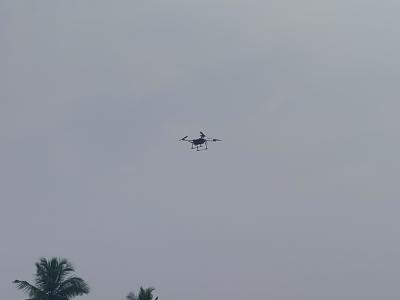Image Processing
This is a wheat breeding phenotyping and yield dataset, including canopy height (CH, m), canopy volume (CV, m3), and leaf area index (LAI) collected in the field; vegetation index (VI) generated by multispectral data acquired by UAV remote sensing; trial site weather (Weather); and yield (Yield, kg). The data comes from field trials.
Data acquisition and processing are described in the relevant part of the manuscript.
- Categories:
 295 Views
295 Views
Visual tracking has seen remarkable advancements, largely driven by the availability of large-scale training datasets that have enabled the development of highly accurate and robust algorithms. While significant progress has been made in tracking general objects, research on more challenging scenarios, such as tracking camouflaged objects, remains limited. Camouflaged objects, which blend seamlessly with their surroundings or other objects, present unique challenges for detection and tracking in complex environments.
- Categories:
 45 Views
45 Views
Set5, Set11, and Set14 are classic small-scale benchmark datasets widely used for image super-resolution tasks. BSD100 and BSD500 feature complex natural scenes, commonly used for denoising and segmentation research. McM18 is a medical imaging dataset focused on medical image reconstruction. Urban100 emphasizes urban scenes, ideal for evaluating models on high-frequency details and structural textures. These datasets span diverse applications, serving as valuable benchmarks in computer vision research.
- Categories:
 25 Views
25 ViewsThe file contains merely a small portion of our research results. The particular picture presented showcases the outcomes that were achieved through our fusion method when applied to the TNO test set. The "ir", which is the abbreviation for infrared light image, is characterized by being rich in thermal radiation information. However, it unfortunately has a rather low spatial resolution. On the other hand, the "vis", representing the visible light image, is abundant in scene information. But it has a drawback in that the human targets within it are not so distinctly visible.
- Categories:
 216 Views
216 ViewsIn the captured image, a drone is seen in flight, displaying its advanced technological features and capabilities. The image highlights the drone's robust design and aerodynamic structure, which are essential for its diverse applications in research and development. Drones, also known as Unmanned Aerial Vehicles (UAVs), are increasingly being utilized in various fields due to their ability to collect data from hard-to-reach or hazardous areas.
- Categories:
 298 Views
298 Views
In recent years, the field of visual tracking has made significant progress with the application of large-scale training datasets. These datasets have supported the development of sophisticated algorithms, enhancing the accuracy and stability of visual object tracking. However, most research has primarily focused on favorable illumination circumstances, neglecting the challenges of tracking in low-ligh environments. In low-light scenes, lighting may change dramatically, targets may lack distinct texture features, and in some scenarios, targets may not be directly observable.
- Categories:
 40 Views
40 Views
The dataset folder is divided into two parts. The first part is the Train dataset, which contains 900 Kvasir-SEG data sets and 550 CVC-ClinicDB data sets, with a total of 1450 training images. image is the original image and masks are labels. The next is the test dataset, which contains the remaining images of Kvasir-SEG and CVC-ClinicDB as the test set, and all images of CVC-ColonDB, ETIS, and CVC-300 as the test set images.
- Categories:
 97 Views
97 Views
The dataset folder is divided into two parts. The first part is the Train dataset, which contains 900 Kvasir-SEG data sets and 550 CVC-ClinicDB data sets, with a total of 1450 training images. image is the original image and masks are labels. The next is the test dataset, which contains the remaining images of Kvasir-SEG and CVC-ClinicDB as the test set, and all images of CVC-ColonDB, ETIS, and CVC-300 as the test set images.
- Categories:
 106 Views
106 Views
The NEU-DET dataset is a collection of images featuring surface defects on hot-rolled steel strips. These defects are categorized into six classes: cracks (cr), inclusions (in), patches (pa), pitted surfaces (ps), rolled-in scale (rs), and scratches (sc). The dataset contains 300 grayscale images for each category, totaling 1800 images, with each image sized at 200×200 pixels.
- Categories:
 765 Views
765 Views
The Railway Surface Defect Detection (RSDDs) dataset was created to enhance the safety and reliability of railway transportation. This dataset comprises two subsets: Type-I RSDDs and Type-II RSDDs, which were collected from express and common/heavy haul railways, respectively. Type-I RSDDs consists of 67 images, each measuring 160×1000 pixels, while Type-II RSDDs includes 128 images, each measuring 55×1250 pixels. These images were captured under various lighting conditions to simulate real-world railway manufacturing and maintenance environments.
- Categories:
 183 Views
183 Views
